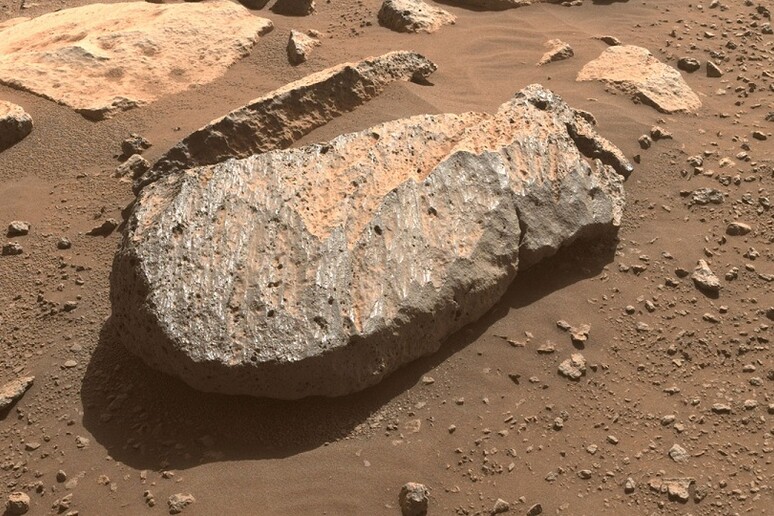It’s roughly the size of a carry-on suitcase, weighs about 55 pounds, and comes from another planet. That’s not science fiction—it’s the centerpiece of Sotheby’s upcoming Natural History auction in New York.
Designated NWA 16788, the meteorite is the largest known piece of Mars ever found on Earth. Its estimated value ranges between $2 million and $4 million.
What sets it apart isn’t just its extraterrestrial origin, but its exceptional size. At roughly 70% larger than the second-biggest Martian meteorite on record, NWA 16788 alone accounts for nearly 7% of all known Martian material held on Earth.
According to Sotheby’s, the rock likely broke off from the Martian surface following a powerful asteroid impact. It then traveled approximately 140 million miles before crashing into the Sahara Desert, where it was discovered in Niger in November 2023 by a researcher.
A sample of the meteorite, marked by red, brown, and gray hues, was analyzed in a lab to confirm its Martian origin. Scientists matched its chemical profile to data collected during NASA’s Viking missions in the 1970s. Experts classified it as an olivine-microgabbroic shergottite, a rare variety formed by the slow cooling of magma on Mars.
Its glossy surface, likely created by the intense heat of atmospheric entry, was the first clue pointing to its extraordinary journey.
“This is a one-of-a-kind specimen,” said Cassandra Hatton, Sotheby’s Global Head of Science and Natural History. “Out of more than 77,000 officially recorded meteorites, only about 400 are known to come from Mars.”
The Martian meteorite will headline Sotheby’s “Geek Week 2025,” but it won’t be alone in drawing attention.
Also up for sale is the fossilized skeleton of a juvenile Ceratosaurus nasicornis, estimated to fetch between $4 million and $6 million. Dating back roughly 150 million years to the Late Jurassic, the dinosaur was discovered in 1996 near Laramie, Wyoming. The specimen stands over 6.5 feet tall and stretches nearly 10 feet long, assembled from 140 bones supplemented by reconstructed elements to complete its silhouette.
The Ceratosaurus, a bipedal carnivore, shares a similar profile to the better-known Tyrannosaurus rex but was notably smaller, with adults reaching up to 25 feet in length.
All told, 122 lots will be included in the auction catalog, featuring meteorites, fossils, and minerals of rare beauty and scientific value.












